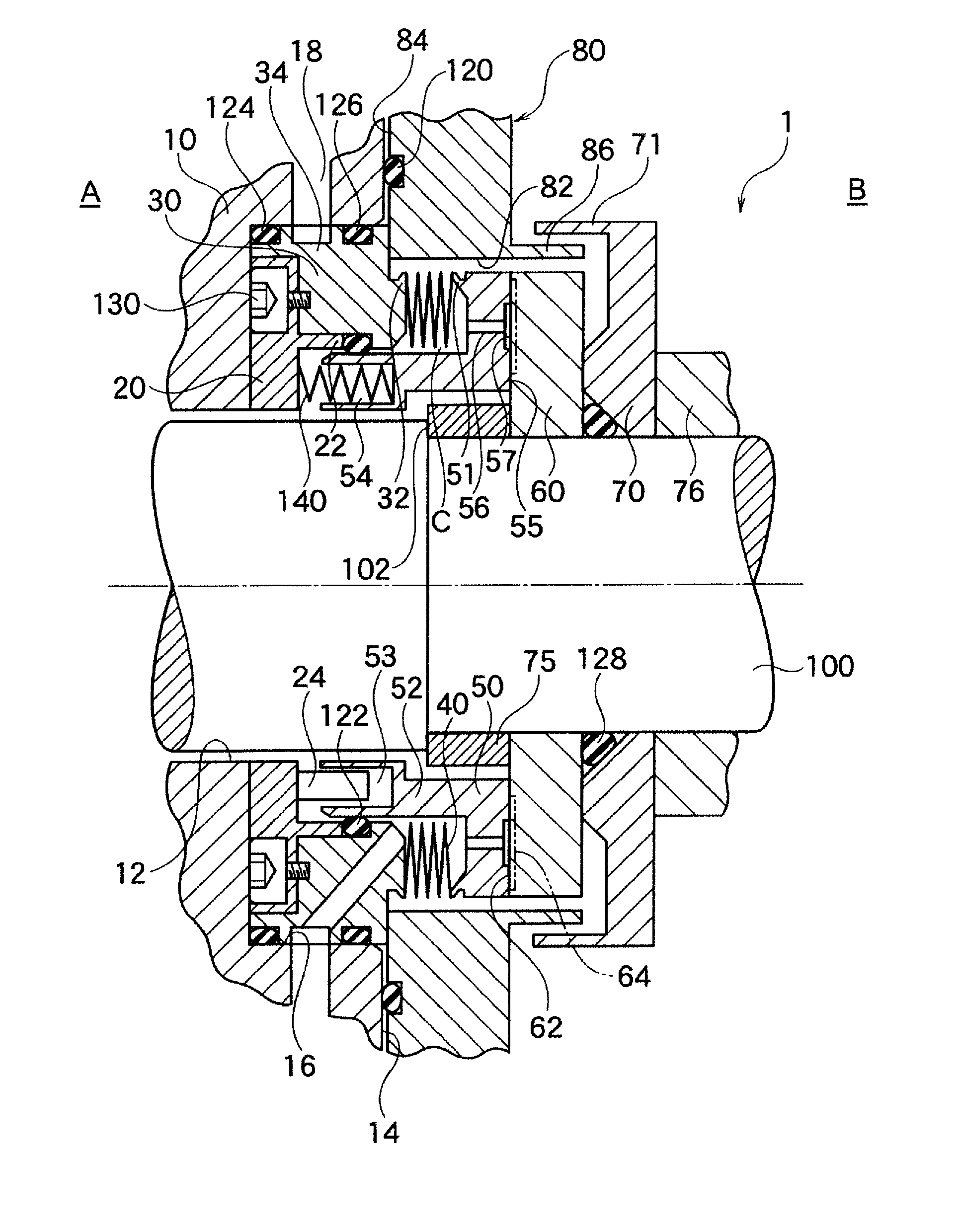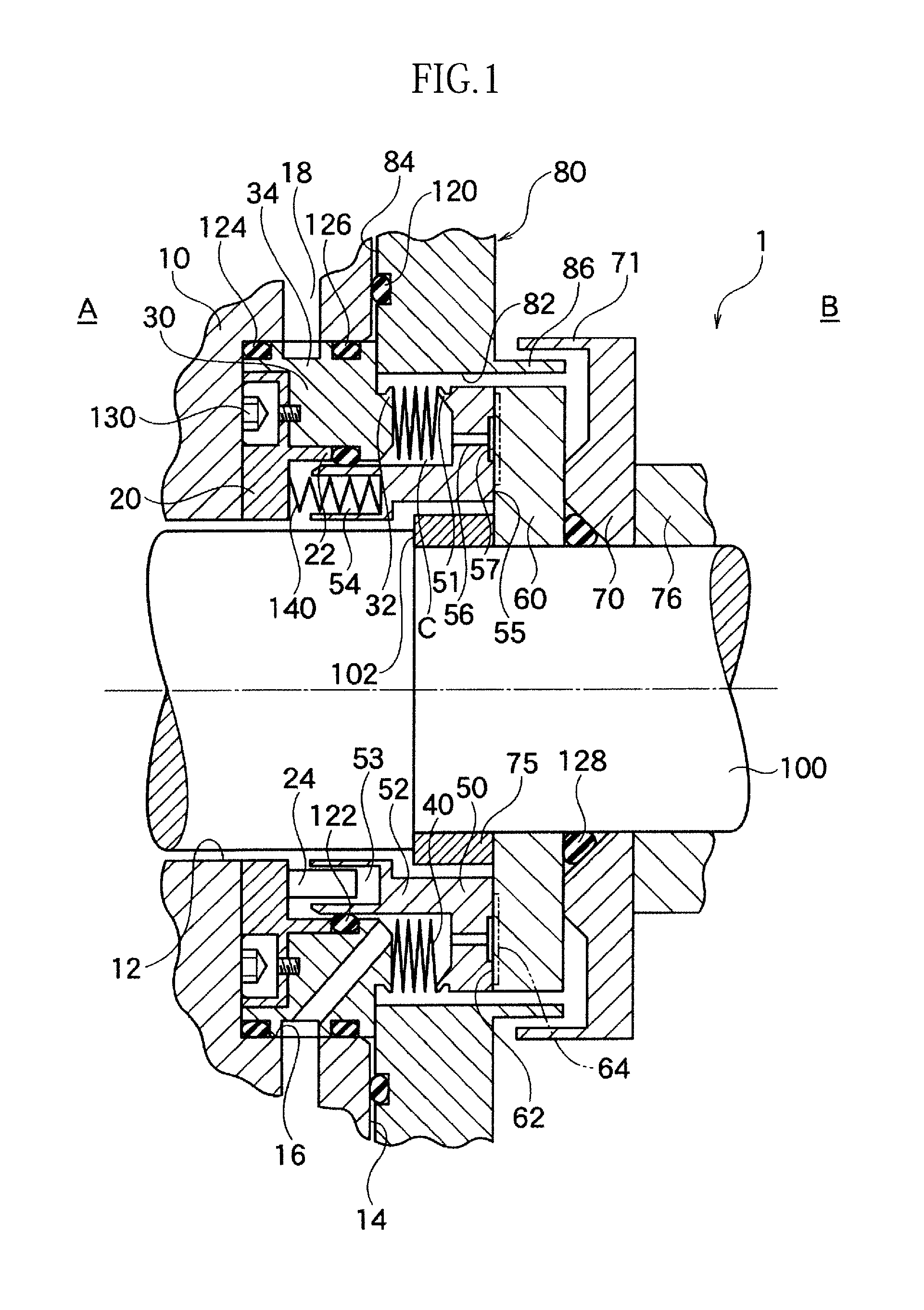Mechanical seal device
a mechanical seal and sealing fluid technology, applied in the direction of engine seals, mechanical apparatus, engine components, etc., can solve the problems difficulty in properly maintaining a clearance between sliding surfaces, and prone to damage, so as to achieve the effect of reducing the structure of o-rings, springs and the like contacting with sealed fluid, avoiding leakage, and avoiding leakag
- Summary
- Abstract
- Description
- Claims
- Application Information
AI Technical Summary
Benefits of technology
Problems solved by technology
Method used
Image
Examples
first embodiment
[0032]A mechanical seal device 1 according to the present embodiment is a seal device mounted on apparatuses such as stirring machines for general industrial use, blowers, compressors and the like. Particularly, it is used for purposes of manufacturing food products, medical products and chemical substances.
[0033]The mechanical seal device 1 has an inside type structure, in which the sealed fluid is arranged outside in a radial direction with respect to a sealing surface. The sealed fluid at a machine inside B is sealed by the seal device 1 arranged at a clearance formed between a rotary shaft 100 and a stuffing box 80. Further, in FIGS. 1 and 2, the left side in the axial direction is a machine outside A and the right side in the axial direction is the machine inside B.
[0034]A shaft hole 82 is formed through the stuffing box 80, and the rotary shaft 100 rotatably supported by bearings which is not expressed with a figure, extends through this shaft hole 82. At the inner side of the...
second embodiment
[0061]As illustrated in FIG. 5, a mechanical seal device 1a according to the present embodiment is an alternative of the mechanical seal device 1 of the first embodiment illustrated in FIGS. 1 to 4, and has the same structure and the same function effects with the first embodiment except for the followings. For the structure common to the first embodiment, similar marks are used in the figure and the explanations for the overlapped parts are omitted.
[0062]In this embodiment, inside of the static pressure fluid chamber C, a plurality of coil springs 140a serving as resilient members are intermittently arranged in a circumferential direction. In order to achieve the above structure, in this embodiment, a cylindrical protruding portion 26 extending toward the rotary seal ring 60 is integrally formed on a radially inner end of the adapter 20. At an outer circumference of tip end of the cylindrical protruding portion 26, a cylindrical portion 52a of the static seal ring 50 is movably mou...
PUM
 Login to View More
Login to View More Abstract
Description
Claims
Application Information
 Login to View More
Login to View More - R&D
- Intellectual Property
- Life Sciences
- Materials
- Tech Scout
- Unparalleled Data Quality
- Higher Quality Content
- 60% Fewer Hallucinations
Browse by: Latest US Patents, China's latest patents, Technical Efficacy Thesaurus, Application Domain, Technology Topic, Popular Technical Reports.
© 2025 PatSnap. All rights reserved.Legal|Privacy policy|Modern Slavery Act Transparency Statement|Sitemap|About US| Contact US: help@patsnap.com



